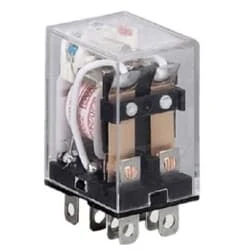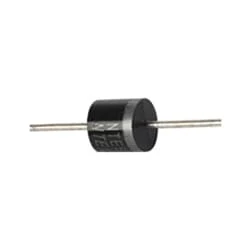Dc Motor control Forward Reverse and stop:
This Diagram Shows When there is a Reverse Rotation Signal The Motor Reverses And There is a Forward Rotation signal The Motor Rotates forward. When There is no forward Rotation Signal and no Reverse Rotation Signal, The Motor Stops; When Forward Rotation, if There is a Forward Flotation limit, it will Stop Forward Flotation; During Rotation, if There is a Reverse Rotation limit Signal, the Reverse Rotation will be stopped. Removing the two limit Signals will not Restore the Rotation, and it is necessary to re-Input The Rotation Signal to Start the Forward and Reverse Rotation.
Diagram of Dc Motor control Forward Reverse and stop wiring:
 |
| Fig 1: Dc Motor control Forward Reverse and stop |
Components Need for this Project:
You can get the components from any of the sites below:
- DC Motor [See Buy Click Amazon]
- 12V Battery [See Buy Click Amazon]
- Relay [See Buy Click Amazon]
- Reverse Switch [See Buy Click Amazon]
- Forward Switch [See Buy Click Amazon]
- IN4007 Diode [See Buy Click Amazon]
*Please note: These are affiliate links. I may make a commission if you buy the components through these links. I would appreciate your support in this way!
Read Also:
Components used to make the Dc Motor control Forward Reverse and stop :
01. DC Motor
 |
| Fig 2: DC Motor |
A DC Motor is a device that Converts Electrical energy into Mechanical Energy. A DC motor usually accepts a DC source and converts it into mechanical energy, hence it is called a DC motor. A motor in which a series field coil is connected to the armature is called a series motor. The torque of a series motor depends on the armature current, and field strength. A motor in which the field coil is connected in parallel with the armature is called a shunt motor. The torque of a shunt motor depends on the variation of mains field strength and armature current.
02. 12V Battery
 |
| Fig 3: 12V Battery |
A 12-volt Battery is an Irregular Battery used in Specific Electronic Applications. Of all the types of Batteries, the 12-Volt Battery is one That Looks Very Different Depending on its use. It can be Large or small, Heavy or Light. Twelve-volt batteries are commonly used in RV, Boat, and Other Automobiles Systems. From a Technical Perspective, a Battery Uses one or more cells to Allow a Chemical Reaction Creating the flow of Electrons in a Circuit.
03. Relay
 |
| Fig 4: Relay |
This relay is known as 8 pin relay because it has 8 terminals. When coil power is supplied. A magnetic induction is created due to which the connected sheet of the Com part moves towards the NO part changing to NO-NC. The former NC region loses conductivity and becomes NO. Thus, as long as power is supplied to the coil, the NO and NC positions will remain in the alternating state, and when the power is removed from the coil, it will return to its original position. This is basically how a relay switch works.
04. Reverse Switch
 |
| Fig 5: Reverse Switch |
A Push-Button is a Simple Switch Mechanism To Control Some Aspects of a Machine a Process. Buttons Are Typically Made Out of Hard Material, Usually Plastic or Metal. The Surface is Usually Flat or Shaped to Accommodate The Human Finger or Hand, so as to be easily Depressed or Pushed. Buttons are Most Often Biased Switches, Although Many unbiased Buttons still Require a Spring to Return to their Unpushed state. The "Push-Button" Has Been Utilized in Calculators, Various Other Mechanical and Electronic Devices, Various Other Mechanical and Electronic Devices, Kitchen Appliances, Push-button telephones, Home, And Commercial.
05.Forward Switch
 |
| Fig 6: NC Switch |
A Push-Button is a Simple Switch Mechanism To Control Some Aspects of a Machine a Process. Buttons Are Typically Made Out of Hard Material, Usually Plastic or Metal. The Surface is Usually Flat or Shaped to Accommodate The Human Finger or Hand, so as to be easily Depressed or Pushed. Buttons are Most Often Biased Switches, Although Many unbiased Buttons still Require a Spring to Return to their Unpushed state. The "Push-Button" Has Been Utilized in Calculators, Various Other Mechanical and Electronic Devices, Various Other Mechanical and Electronic Devices, Kitchen Appliances, Push-button telephones, Home, And Commercial.
06. IN4007 Diode
 |
| Fig 7: IN4007 Diode |
The word diode is a combination of two words, 'die' and 'electrode' so we can generally say that an electronics component having two electrodes is a diode. Diode or rectifier is used in various ways in electronics. However, the main and main function of a diode or rectifier in electronics is to convert AC current into DC current and make the current constant. And this process of converting current AC to DC is called rectification. When current is supplied to the diode, it cannot return because the diode has negative to positive, denoted by P and N. P means anode positive RN means cathode negative.
Watch to Youtube:
Thank You for visiting the website. Keep visiting for more Updates.








Post a Comment
Do leave your comments